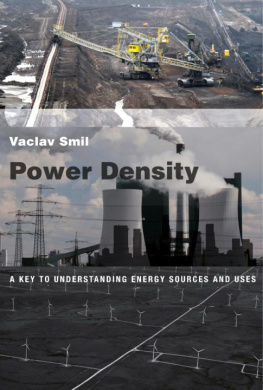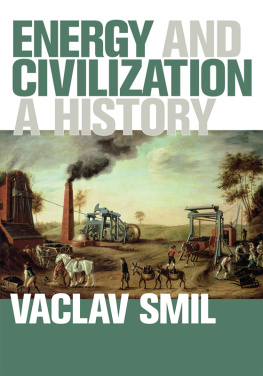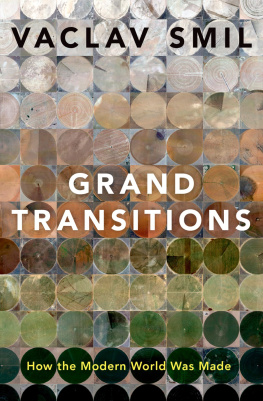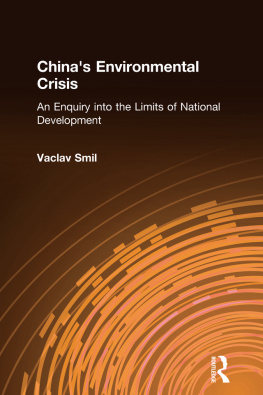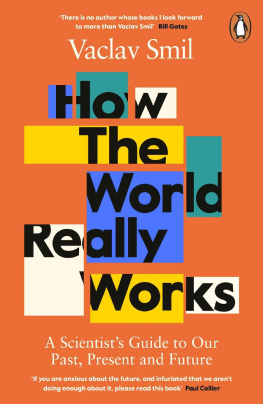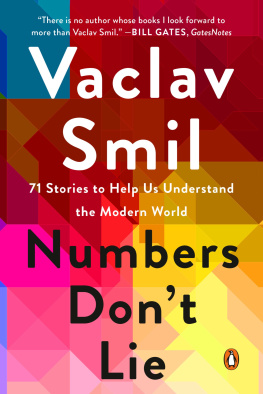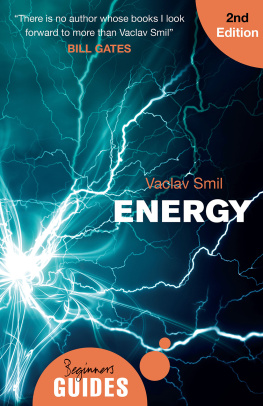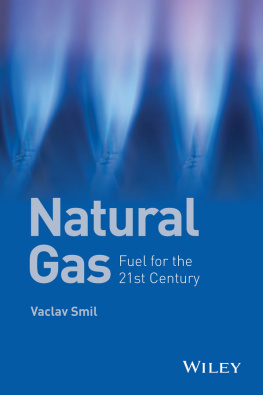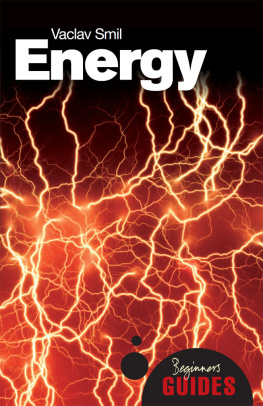Vaclav Smil - Power destiny: a key to understanding energy sources and uses
Here you can read online Vaclav Smil - Power destiny: a key to understanding energy sources and uses full text of the book (entire story) in english for free. Download pdf and epub, get meaning, cover and reviews about this ebook. City: London, Cambridge, year: 2015, publisher: The MIT Press, genre: Romance novel. Description of the work, (preface) as well as reviews are available. Best literature library LitArk.com created for fans of good reading and offers a wide selection of genres:
Romance novel
Science fiction
Adventure
Detective
Science
History
Home and family
Prose
Art
Politics
Computer
Non-fiction
Religion
Business
Children
Humor
Choose a favorite category and find really read worthwhile books. Enjoy immersion in the world of imagination, feel the emotions of the characters or learn something new for yourself, make an fascinating discovery.
- Book:Power destiny: a key to understanding energy sources and uses
- Author:
- Publisher:The MIT Press
- Genre:
- Year:2015
- City:London, Cambridge
- Rating:5 / 5
- Favourites:Add to favourites
- Your mark:
- 100
- 1
- 2
- 3
- 4
- 5
Power destiny: a key to understanding energy sources and uses: summary, description and annotation
We offer to read an annotation, description, summary or preface (depends on what the author of the book "Power destiny: a key to understanding energy sources and uses" wrote himself). If you haven't found the necessary information about the book — write in the comments, we will try to find it.
Power destiny: a key to understanding energy sources and uses — read online for free the complete book (whole text) full work
Below is the text of the book, divided by pages. System saving the place of the last page read, allows you to conveniently read the book "Power destiny: a key to understanding energy sources and uses" online for free, without having to search again every time where you left off. Put a bookmark, and you can go to the page where you finished reading at any time.
Font size:
Interval:
Bookmark:

A Key to Understanding Energy Sources and Uses
Vaclav Smil
The MIT Press Cambridge, Massachusetts London, England
Modern societies have many concerns about their energy supply. Above all, it should be affordable, reliable, and convenient: affordable in order to drive economic development and improvements in quality of life, reliable so as to be available on demand in its various forms, most of all as uninterruptible electricity, and convenient to give consumers virtually effortless access to preferred household, industrial, and transport energies. During the closing decades of the twentieth century two other concerns became prominent: energy supplies should also be environmentally benign and, preferably, renewable. Since the 1970s-that is, once energy matters began to receive, belatedly, an unprecedented amount of professional and public attention-all of these concerns have been addressed and analyzed in hundreds of books and thousands of papers, to say nothing of the instant expertise proffered by the mass media.
Any modestly informed person knows that energy prices matter (we need only think of OPEC's crude-oil price fixing), as do a reliable electricity supply (to avoid blackouts) and the finiteness of fossil fuel resources (underscored by claims about an imminent peak of oil extraction), and that the environmental impacts of energy use are not only local but worldwide (global warming). But does power density matter? Power is simply energy flow per unit of time (in scientific units, joules per second, which equals watts, or J/s = W), spatial density is the quotient of a variable and area, and hence power density is W/m2, that is, joules per second per square meter. Why should we care about how much power is produced, or used, per unit of the Earth's surface? Some say explicitly that we should not bother at all.
Amory Lovins spent a lifetime making exceedingly optimistic forecasts about the speed with which renewable energy conversions (and other energy-related innovations) would be adopted by modern energy systems (for these claims, see Lovins 1977 and 2011a; for their critique, see Smil 2010a). In 2011 he dismissed any need to consider power densities, concluding that "land footprint seems an odd criterion for choosing energy systems: the amounts of land at issue are not large, because global renewable energy flows are so vast that only a tiny fraction of them need be captured" (Lovins 2011b, 40). In contrast, nearly two generations ago Wolfgang Hafele and Wolfgang Sassin, two leaders of energy research at the International Institute for Systems Analysis, wrote that "the density of energy operations is one of the most crucial parameters that predetermine the structure of the energy systems" (Hafele and Sassin 1977, 18).
Even so, most of the modern energy literature has simply ignored the subject. Energy economists have been worrying about prices, their elasticities, oligopolies, taxation, and links between energy use and economic growth. As interest in energy matters began to rise, Malcolm Slesser offered an explanation of this omission:
Land has always had a firm place in classical economics, where attention focused upon the agrarian economy, and land as a factor of production. Ricardo and Malthus founded their ideas around the land factor, in marked contrast to more recent economic thought in which land virtually dropped out of the scene, and production was viewed essentially as a synergy of labour and capital. (Slesser 1978, 86)
Similarly, modern engineering analyses of energy systems look at fuel qualities, mass throughputs, the rated power of energy converters, and annual and peak production. Of course, the design of specific energy extraction or conversion facilities must, inevitably, consider land requirements and land qualities in requisite detail, but space is not a common analytical denominator used to assess their performance. Still relatively uncommon interdisciplinary inquiries into the nature and linkages of modern energy systems look at per capita energy use, energy's role in economic performance, and the impacts of energy conversions on environmental quality, but only very few recent publications have looked at power densities.
I chose the measure as a key analytical variable in General Energetics (Smil 1991) and in its second, expanded edition, titled Energy in Nature and Society (Smil 2008). David McKay's Sustainable Energy-Without the Hot Air (2008) also uses the rate as an essential indicator that offers revealing insights into unfolding energy transitions. And Juan Moreno Cruz and M.Scott Taylor offer a rare example of economists who have explicitly incorporated energy density and power density in their new analysis, concluding that "perhaps the most important attribute of an energy source is its density: its ability to deliver substantial power relative to its weight or physical dimensions" (Cruz and Taylor 2012, 2) and that "the very density of the energy resource we seek, fuels our efforts to obtain more. Therefore differences in power density across energy resources create large differences in energy supply" (Cruz and Taylor 2012, 48).
In this book I demonstrate that power density is a key determinant of the nature and dynamics of energy systems. Its careful quantifications, their critical appraisals, and their revealing comparisons bring a deeper understanding of the ways with which we harness, convert, and use energies. A careful assessment of power densities is particularly revealing when contrasting our dominant fossil fuel-based energy system with renewable energy conversions. But before I start laying the foundation for my systematic power density assessments (by introducing the principal variables and reviewing different power density concepts), I tell a story of early modern charcoal-based iron smelting and of its replacement by coke-based production in blast furnaces. This historical appraisal offers a compelling (yet curiously overlooked) example of why power densities matter, why energy's rate of flow per unit of surface area is a key determinant of the structure of energy systems, and how it constrains their development.
All of my books written between 2000 and 2009 had, besides many photographs, numerous original illustrations on whose creation I worked with Doug Fast, a photographer and graphic artist at the University of Manitoba. Doug left the university in 2009, and as a result, all of my post-2010 books had either only rudimentary graphs or no original illustrations (just some photographs evoking the contents of individual chapters), and Making the Modern World, the last book to come out, in 2013, had no images at all.
Fortunately, this has changed, thanks to the assistance of Ian Saunders, who served as the project's creative director, and a team that included Anu Horsman, Jen Krajicek, Luke Shuman, Carl de Torres, and Wendy Woska. Additionally, Noli Novak created stippled portraits from low-resolution photographs of John Henry Poynting and Nikolai Alekseevich Umov. My thanks to all: as a lifelong graphics aficionado I greatly appreciate the difference simple, elegant illustrations can make.
Font size:
Interval:
Bookmark:
Similar books «Power destiny: a key to understanding energy sources and uses»
Look at similar books to Power destiny: a key to understanding energy sources and uses. We have selected literature similar in name and meaning in the hope of providing readers with more options to find new, interesting, not yet read works.
Discussion, reviews of the book Power destiny: a key to understanding energy sources and uses and just readers' own opinions. Leave your comments, write what you think about the work, its meaning or the main characters. Specify what exactly you liked and what you didn't like, and why you think so.

